An interview with the editors of Cycling for Sustainable Cities
Bicycle Colorado recently sat down with researchers Ralph Buehler and John Pucher to talk about the research in their new book, Cycling for Sustainable Cities, an updated and more expansive follow-up to their 2012 work, City Cycling.
Buehler and Pucher worked with more than 40 academic researchers, planners, engineers and advocates on Cycling for Sustainable Cities, which takes a close look at how bicycling makes cities stronger, healthier and more resilient places to live and work.
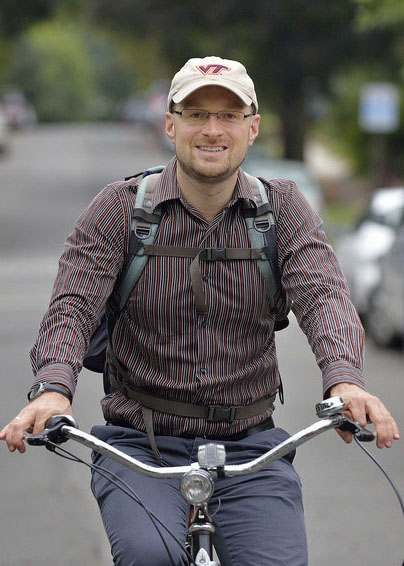
Ralph Buehler

John Pucher
Their research focused on building bicycling infrastructure for all, eBike adoption, bicycling’s contribution to social justice, bicycle parking and more. Buehler and Pucher hope their new collection can provide a roadmap for city, state, and national governments, both political leaders and professional transport staff, to embrace and encourage the world’s most efficient, most equitable, and healthiest transportation tool—the bicycle.
Take a look at our conversation with Buehler and Pucher below, which has been edited and condensed for clarity.
Bicycle Colorado (BC): This is the follow up to your 2012 book City Cycling. Can you tell me a little bit about the difference between the two books? And specifically, I’d like to hear from you about the difference in the titles between the two books.
John Pucher (JP): We increased the geographic scope of the new book. For example, we included new chapters on Latin America as well as on China and India. We also included new chapters on eBikes, cycling promotional programs, bike parking, and cycling for older adults. There’s also a new chapter on advocacy. Cycling advocacy organizations are important in getting expanded, high-quality, and interconnected cycling facilities implemented! Not just at the local level, but also at the state, national, and even international level. There is a tightly integrated, interconnecting network of advocacy groups that are crucial to the success of cycling. There are many politicians who are willing to do something to promote cycling, but they need the push from cycling advocates, as well as the public support advocates can help generate. They need advocates writing op eds for newspapers or editorials, letters to the editor, call-ins to radio discussions, and in-person meetings with political leaders to tell them: “let’s not wait to invest in cycling, we will help support your efforts.” As we show in that chapter, advocates can very effectively organize a lot of affiliated groups, such as environmentalists, to provide the necessary public support. That is why I love bicycle advocates. Without their support, even the most brilliant ideas, plans, and designs of academic and transport professionals would not be implemented.
Ralph Buehler (RB): We also added a chapter on parking. I think overall the book has become much more international. We have now 43 authors from five continents. We also have a chapter on China and India in the book; as well as a case study from Seville in Spain, which was not bike oriented at all and has become bike friendly. Before we didn’t have the geographic breadth that we have now. The time that passed between the old book and now was pretty crucial in bicycling practice and in bicycling research as well. Research has increased three, four or five fold over the decade.
JP: And by the way, my favorite thing is the cover.
BC: That looks like Amsterdam to me.
JP: It is indeed Amsterdam. The long-time bike planner of Amsterdam, Ria Hilshort, had her staff take that photo for us. I was very glad to get Amsterdam on the front cover. Do you notice all the women cycling in that photo? In the Netherlands, more than half of all bike trips are by women, just as in Denmark and Japan, by the way! And roughly half in Germany, Austria, Switzerland, Norway, Sweden, and Finland! Very different from the USA, where only about a fourth of all bike trips are by women.
BC: I do, and actually the first thing that jumps out to me is the box bike in the center. We don’t have tons of them in Colorado, but there are more and more. And the red-dyed lanes also stand out.
RB: The cover shows many things, including the high share of women and different trip purposes with the cargo bike. It also shows bike friendly infrastructure. There is even a traffic light that gives the green light to bicycles.
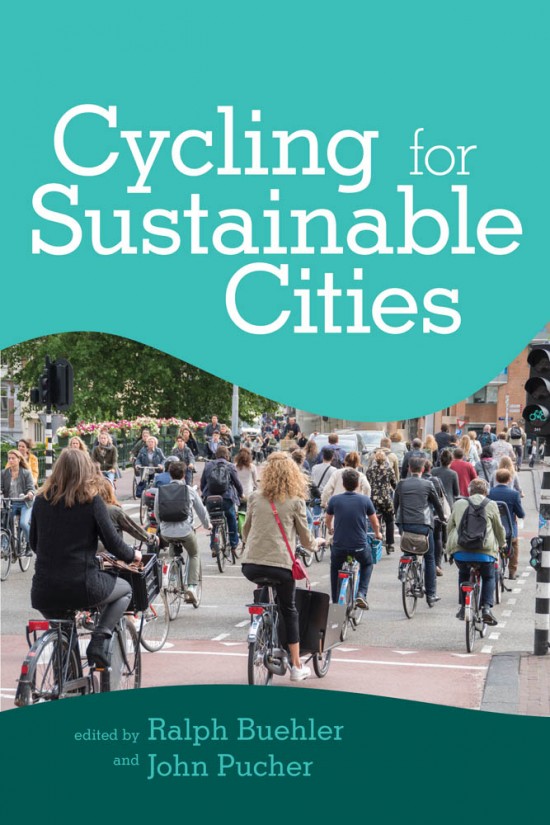
Cycling for Sustainable Cities cover,
courtesy MIT Press
JP: Don’t tell him everything. Jack, what is the thing that strikes you the most as you look at that picture?
BC: I mean, that’s a street completely dedicated to bicycling.
JP: Yeah, and no one is wearing a helmet. It’s amazing that in the Netherlands, no one wears helmets, just knowing they can cycle safely. Ralph and I, as well as the dozens of chapter authors of the book, have nothing against bike helmets, as we almost always wear them ourselves when cycling here in the USA. But in the Netherlands, where cycling is about seven times as safe (per mile cycled) as in the USA, almost no one wears a bike helmet for daily cycling in cities. The Dutch only wear safety helmets for fast sports cycling in the countryside.
BC: Ralph, to what do you attribute the increase in research that you mentioned?
RB: Both an increased interest in research on bicycling and increased interest in practice. People want to promote bicycling, governments are asking questions on how to do it, people start picking up bicycling. There’s also more interest in research and also greater and better data availability. Many cities have started installing counters collecting data on bicycling, doing some before or after studies when bike infrastructure was implemented. And bike share really contributed to that because bike share broadened who rides bikes and bike share came with a ton of data built in.
We also have a move back to the city in that time. In Europe now many cities aggressively want to reduce local and global pollution from cars, mainly CO2 emissions, and they are turning to the bicycle as part of the toolbox to make cities more sustainable.
In Germany, they have come up with this term, “Verkehrswende.” Wende was the term that was used when Socialist East Germany sort of collapsed and then turned to the West, that was the term Wende and now they use it with Verkehr in front of it and Verkehr means transport. So “Verkehrswende” is the transport change that is needed. And they are looking very strongly towards the bicycle.
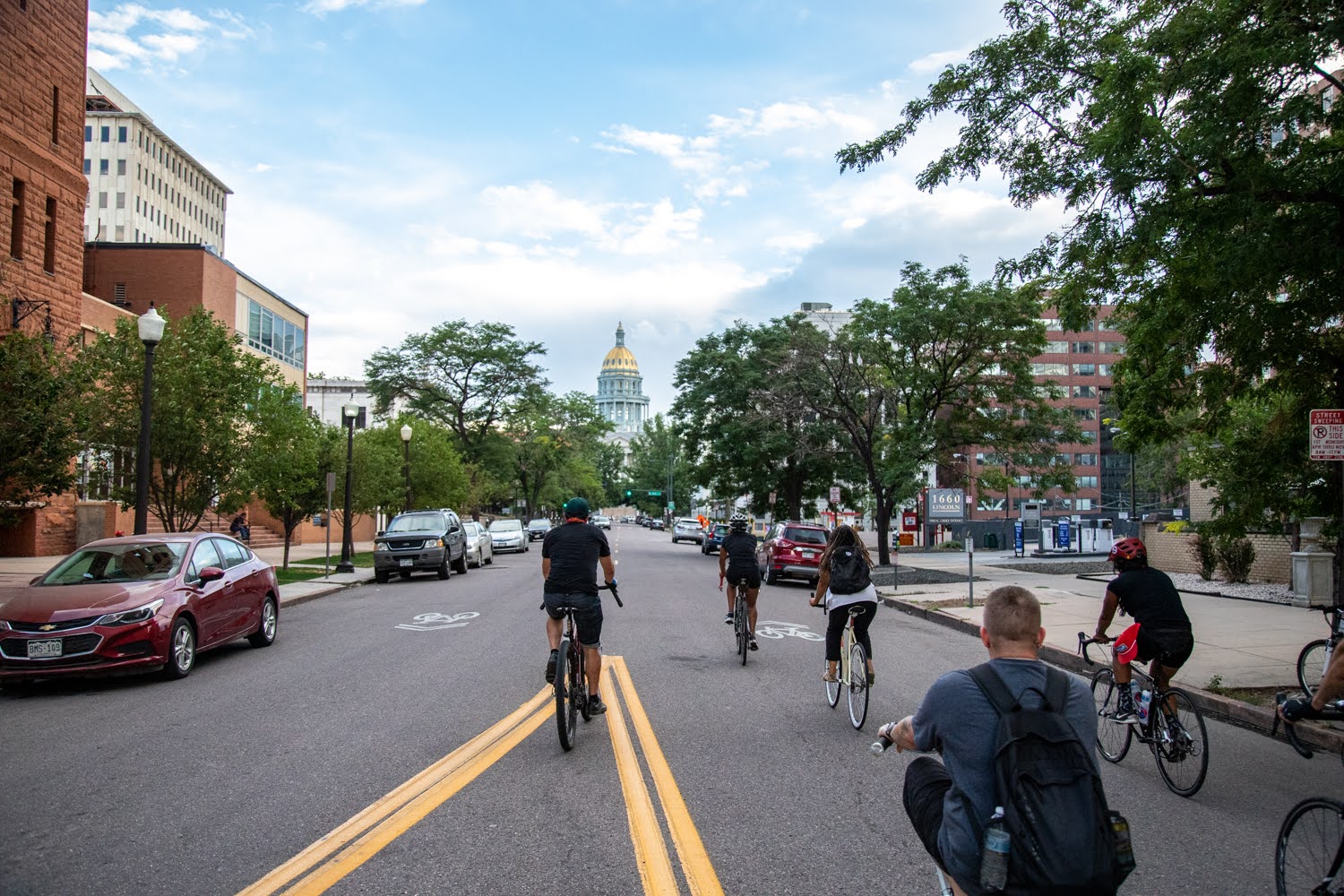
BC: But I’m curious about the titles and the nuance between City Cycling and Cycling for Sustainable Cities?
JP: We used the word “sustainability” in the broad sense: environmental sustainability, economic sustainability, and social sustainability. And we include health impacts in social sustainability. Every single chapter in the new book examines, to some extent, those different aspects of sustainability.
RB: And this also brings something up and I don’t think we emphasized enough in our response before: we have a whole chapter on equity and social justice. And throughout all chapters, we also asked all the authors to relate back if possible, and have dimensions of equity and social justice included in their chapters. That’s a big, big topic, which relates to sustainability.
Cycling for Sustainable Cities broadens the appeal of the book and broadens the appeal of cycling. I presented our book at a conference of the World Bank and the World Resources Institute, and they were mainly interested in making cities more sustainable. Bicycling is an element that can help make cities more sustainable. The conference organizers were interested in electric cars and in many other aspects, but they picked up the book and are interested in bicycling because it can be a tool to make the city more sustainable.
JP: I think that’s a really important point. Even if you never got on a bike at all, you’re benefiting from this, you’re going to breathe cleaner air, this is going to save energy, there’ll be less natural resources used, the streets will become safer, your city will become more livable. Plus, everyone has more mobility options.
BC: We have a few urban areas around the state—Denver, Colorado Springs, Boulder—but we also have tons of smaller, more rural communities. What do you think those communities can take from your book?
JP: In our research of towns across Europe, we found that the bicycling rates in the suburbs, and rural areas were as high or higher than in cities themselves. The key is within the town itself. In a smaller town, distances are shorter, which means it’s more bikeable. In a small town, there is usually less traffic, so that means that it’s more bikeable in that sense, as well. I think the potential of cycling in small towns has been underrated. People don’t think about it, but I think that cycling has a lot of potential in small towns. In addition, public transit in smaller towns is usually unavailable, so bicycling can become a feasible alternative to public transit.
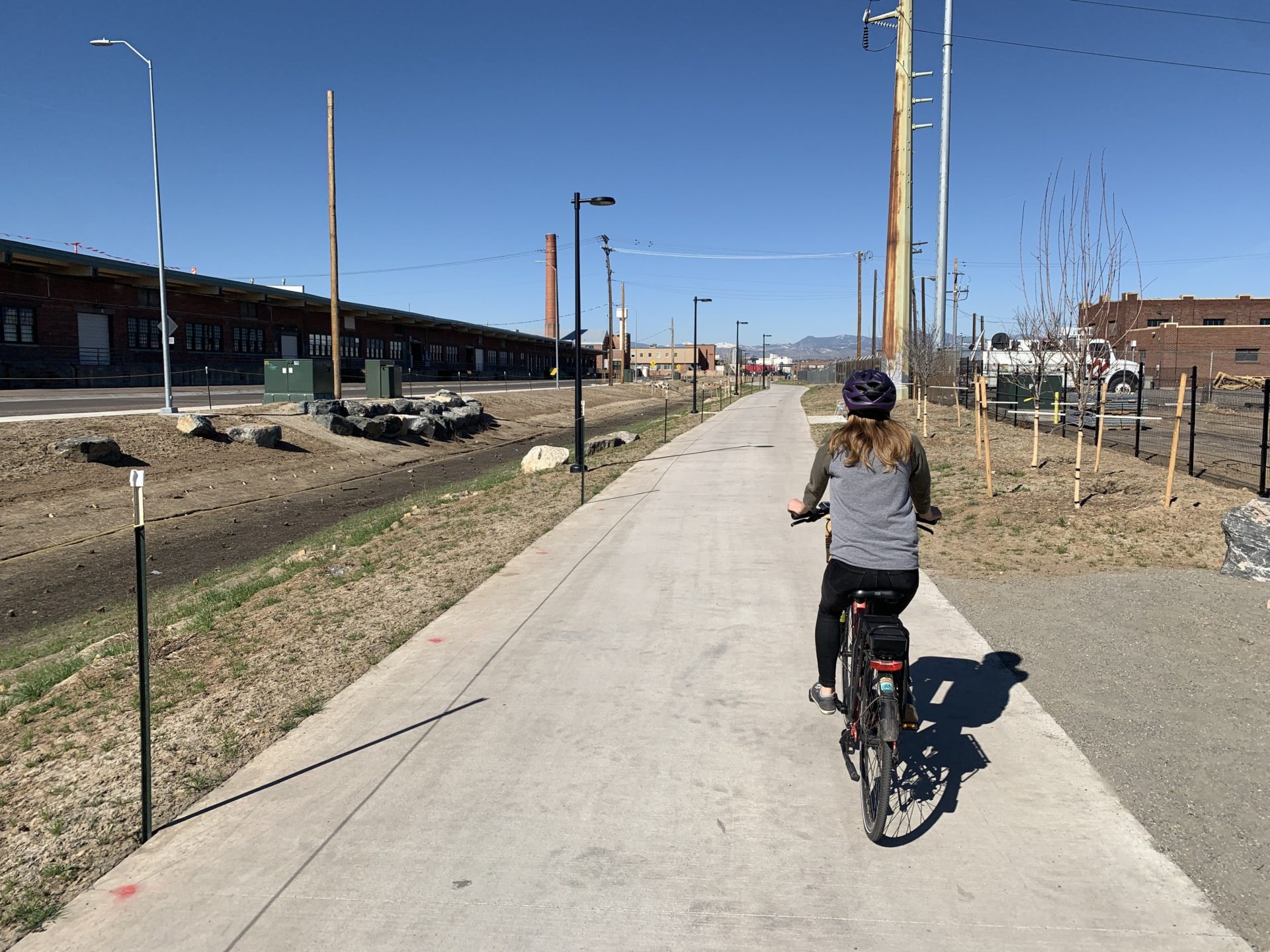
BC: You have chapters for older adults as well as chapters specific for women and children. It seems to me like the book is taking a much more inclusive approach to bicycling than then has kind of been the standard.
JP: We already did have a chapter on women’s cycling in 2012. And we had a chapter on children’s cycling, but we didn’t have one for older adults. Being an older adult myself, I had a self interest in including that chapter, and it was my idea to include it, and I was fortunate to find four brilliant public health professors as co-authors of that chapter, who showed how important cycling can be to the health and mobility of seniors.
My slogan for the past 25 years has been: Cycling for Everyone, all ages and abilities, all income levels, all social groups. Cycling should not be only for well trained young men wearing lycra on fancy, expensive racing bikes. I think many Americans think “oh, well once you’re 65, forget it, you’re not going to get on a bike.” I think it’s important to destroy those sorts of stereotypes that cyclists are just these young, well trained men on racing bikes, and to show that women as well as older adults do indeed bike at high rates in many other countries.
And children? That’s how they get to school in many European countries. It’s the way students get to the university. It’s the way you go shopping, visit friends and so forth. It’s a perfectly normal thing to ride a bike. It’s not something that’s out of the ordinary, weird or exotic. It’s a practical way and efficient to get from point A to point B.
BC: What are some of the policies, in your opinion, that can drive the greatest growth in bicycling?
RB: I mean, the top one is separate bikeway infrastructure. People will not ride a bike, or will not even consider riding a bike, if they have to share with fast moving and high volumes of motorized traffic. It’s just a nonstarter. So having a separate infrastructure, not everywhere, only on roadways with faster moving and high volumes of car traffic, is really key because the perceived danger lets people rule out the bike for many trips. And then on top of that we can layer many other measures and policies. But I think that’s one of the key policies.
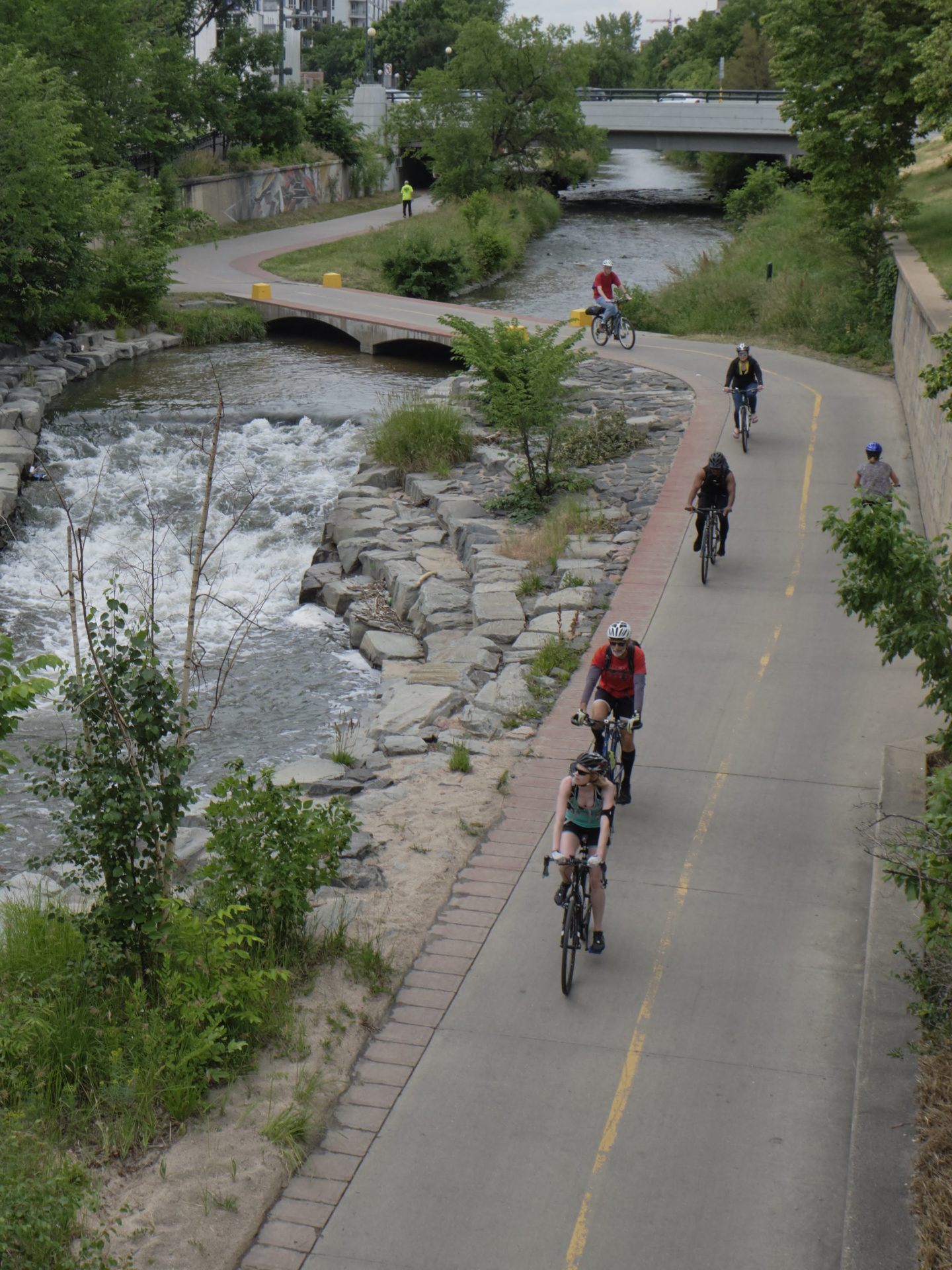
JP: I would combine that with two other kinds of specific efforts: traffic calming of residential areas and reducing car speeds. When you look at where kids ride bikes, they’re not commuting to work. They’re not commuting to the shopping center. They’re riding mainly in their local neighborhood. I think a lot of people, if you’re visiting friends, for example, ride mostly in their local neighborhood. Reducing the speed limit to 20 miles an hour dramatically reduces the likelihood of being seriously injured, as we document in the book.
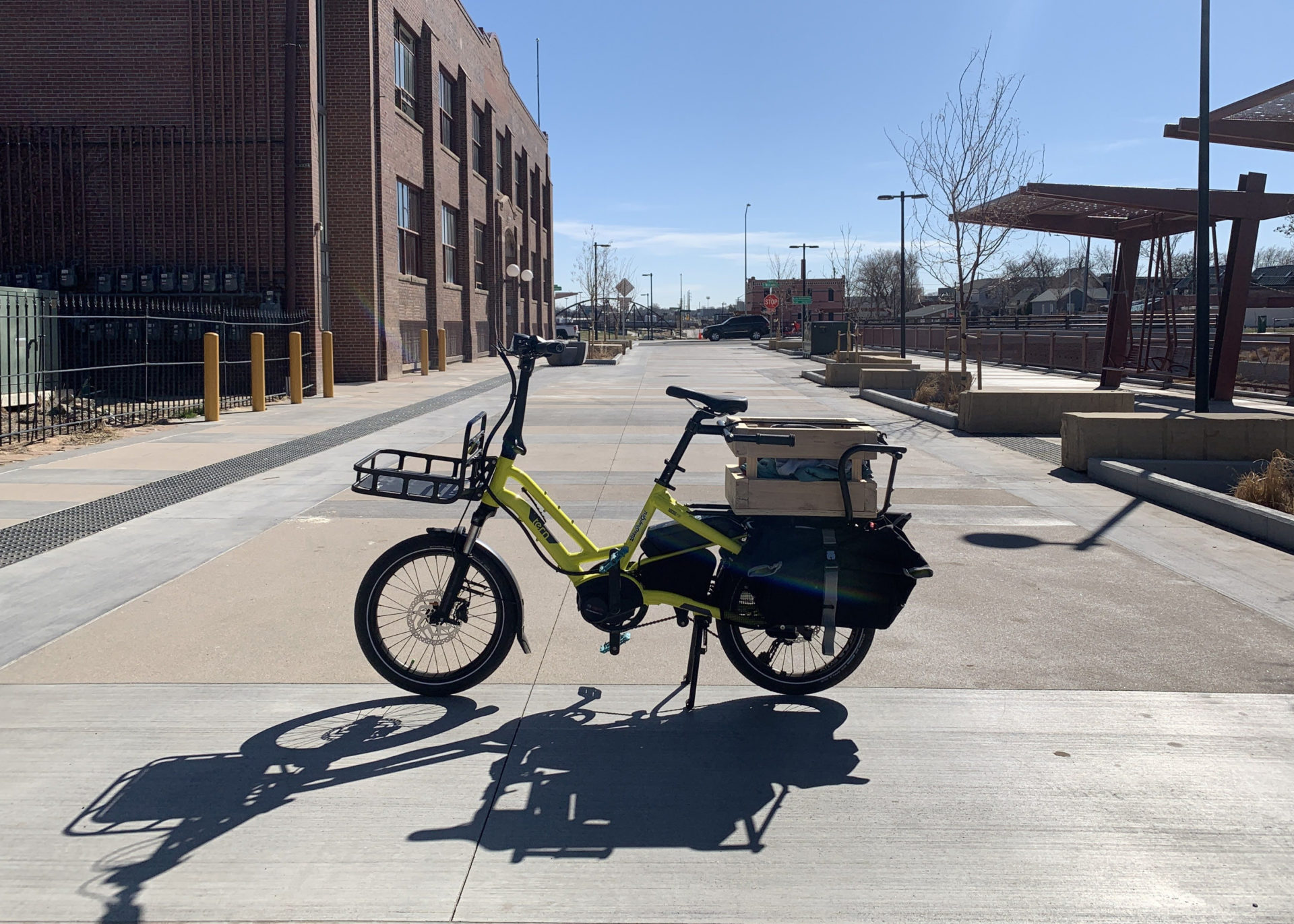
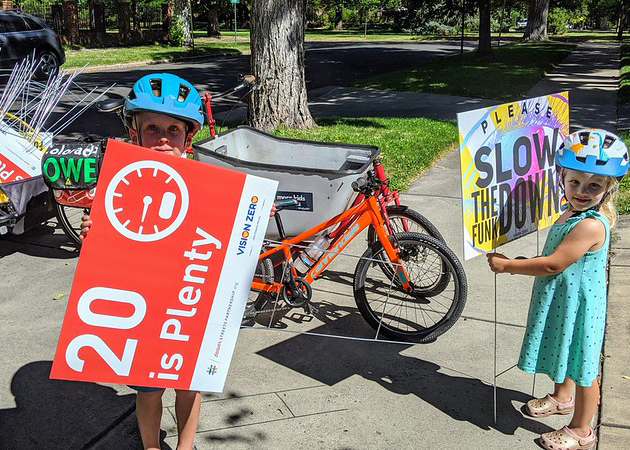
RB: You also need to have networks of biekways that allow you to get from A to B. And these networks consist of different types of facilities. They can be just traffic calmed roads, but they can also be special cycle tracks separated from traffic.
On the other hand, the institutions we’ve built around transport and land use planning focus on the car. They have to be changed. We have zoning ordinances that make mixed use development illegal and that strictly only allow single family residential development. In the U.S., unfortunately, it’s the status quo. And it’s normal to separate the land uses that strictly. We have to stop doing that.
At the same time, we require minimum car parking in most places. Some jurisdictions have moved for maximum car parking, but we require by law that you have to build X number of car parking spots.
Moreover, for transport planning, engineers use something called a level of service. Level of service focuses on vehicle throughput on links and nodes in the network. In essence it measures how fast and how many cars are moving. If the cars are not moving fast enough or the capacity is not big enough, our planning tools tell us there’s a problem. We solve the problem by increasing the level of service, by widening roads and by putting more cars through there, which means we’re moving things ever further out.
We have a system that is codified and standardized that is really built for the car. And within that system, we can make progress with bike infrastructure and bikeways. But if you really want profound change, we have to start changing the systems to not keep promoting car travel.
JP: It’s crucial to emphasize that cycling is in our self interest. Getting that physical activity through cycling strengthens your immune system. It has all sorts of other health benefits—physical, mental, and social. Kids who bicycle to school are much more mentally stimulated and they’re able to think better. Studies show that kids perform two grades further than they actually are when they bike to school! Just imagine that! And it not only benefits the mental abilities of kids, but of older adults as well, reducing the likelihood of getting dementia. Surely, that makes it worthwhile for an older adult to get on a bike!
BC: I know you have a chapter on social justice and equity in bicycling, but I’m curious about your take on the importance of perception and representation in bicycling. If somebody of color, or an older individual, for example, isn’t seeing themselves out in the bicycling community or in bicycling advertising, why would they consider adopting this mode of transportation?
RB: The bicycling community has to be open for everyone and for all groups. There are current or future cyclists out there who are minorities and who are interested in riding bikes. We have to reach out to all, to include everyone in planning for bicycles, in bicycling events, in bicycling conferences, and encourage research on who those cyclists are, what barriers are to cycling, and how to to overcome those.
We have to do a much better job in being inclusive. Bicycling cannot be seen as activity for rich, white men. That’s not going to be the way towards increasing bicycling levels in the U.S.
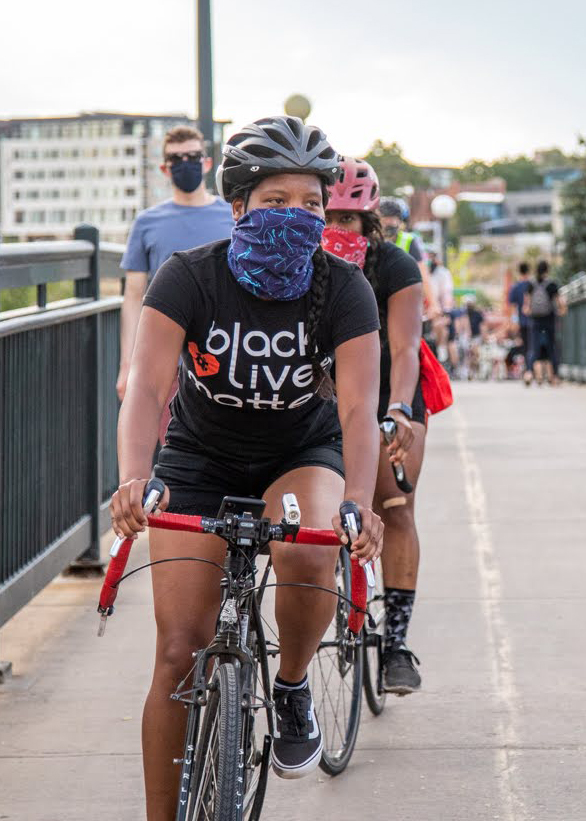
JP: One thing that the author’s emphasized in the equity and social justice chapter is that minority groups need to be actively included in the decision making process. They need to be asked, “What would you like? Where do you bike to? What sort of facility would you like? Do you want to have your community’s traffic calmed?” Involving minority groups in decision making, and really taking their needs and preferences into account in what kinds of facilities you build is important. It shouldn’t be cycling or nothing.
Rather than forcing people to adopt certain cycling policies say, “Well, you know, you’re the community we’re serving, what is it that you want?”
BC: What’s next?
JP: Ralph and I have been doing a lot of research on the COVID impacts on cycling, because it’s interesting and important. We just published a review article in the UK journal Transport Reviews examining all of the research that has been done about the COVID impacts on cycling between 2019 and the time period 2020-March 2021. [You can find this research at the URL at the bottom of this article]
RB: I think from a strict bicycling perspective equity is one big aspect. The other one is more and better intersection infrastructure. Sofar we’ve talked a lot about cycle tracks and infrastructure along the links of the network. At the nodes—at the intersections—we haven’t done a really good job. And now in the US, we’re implementing new safety intersections based on Dutch best practice. So studying these is very interesting. Moreover, bicycle expressways are a new topic and look very promising.
BC: Thank you both so much for your time. I really appreciate it!
JP: Well, thank you for taking the time!
RB: Okay, thank you very much for your time and your interest in the book.
Ralph Buehler is Professor and Chair of Urban Affairs and Planning in the School of Public and International Affairs at Virginia Tech’s Research Center in Arlington, Virginia.
John Pucher is Professor Emeritus in the Urban Planning and Policy Development Program at Rutgers University’s Edward J. Bloustein School of Planning and Public Policy.
You can purchase your copy of Cycling for Sustainable Cities at MIT Press.
And tune in to hear Ralph and John present some of their research with students at the University of Denver!
When: May 20, 4 p.m. MDT
Where: Zoom
Support our work
Leave A COMMENT
Our twitter feed is unavailable right now.









COMMENTS (1)
Christopher Weiland -
I was fortunate to visit The Netherlands and have to echo the comments above. I was shocked to see the morning commute sans helmets! Cycling is viewed as the default mode of transportation and is safe. We have a wonderful opportunity here in Colorado to mirror this experience and make it ours – for ourselves and our future.